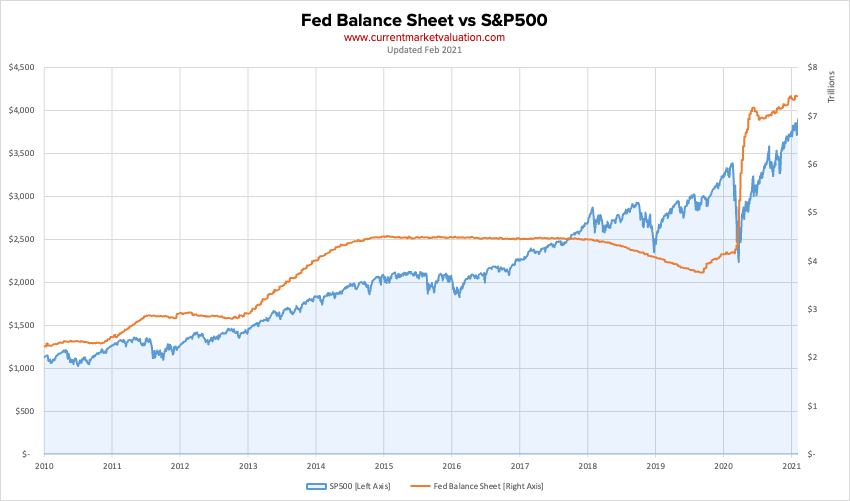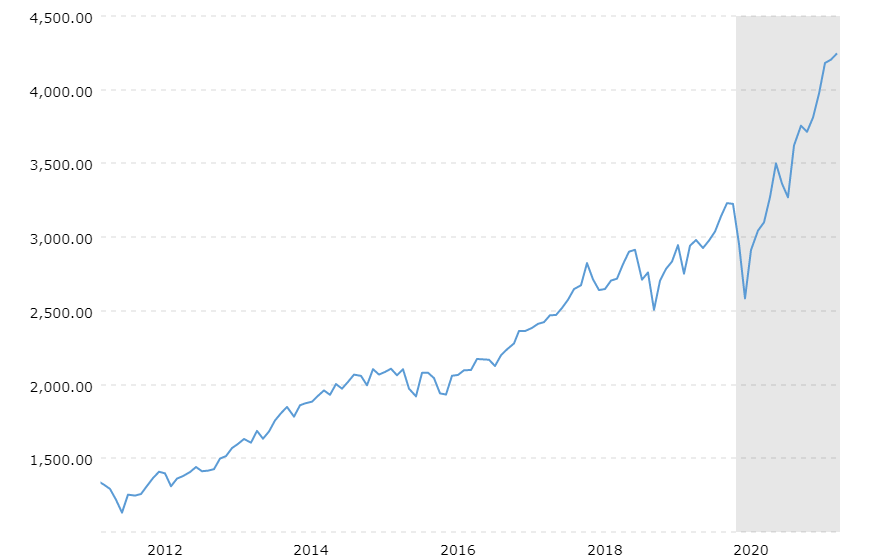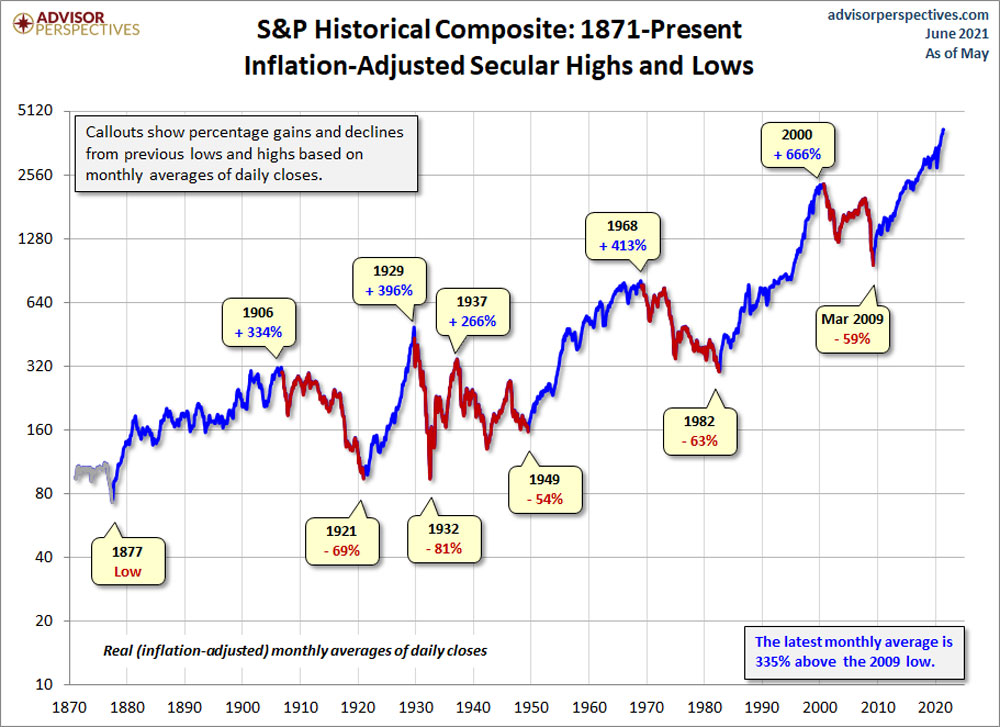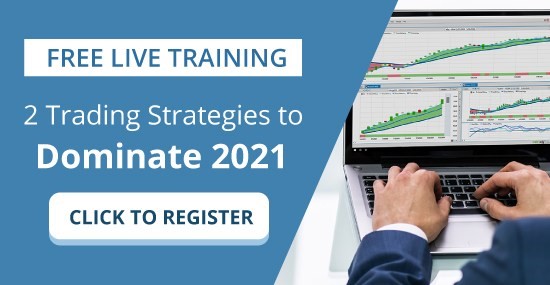
I’ve been thinking a lot about the Federal Reserve meeting which occurred last week. I’ve had difficulty in trying to understand the Fed’s logic from last week’s meeting and the effect it has had on the markets. Look, I’ve been watching markets for a very long time. Over the years you get accustomed to the ebb and flow of ups and downs that come with price discovery. Lately though I’ve spent a lot of time thinking about the difference between centralization in finance (The Fed) versus the decentralized models which crypto is offering. The late great comedian Lenny Bruce once commented that “the audience is a genius.” The sentiment I derive from his statement is that the audience regulates what is comedy. I feel this idea is very important today because it appears that markets (the audience), are mere footnotes and obstacles to what our financial regulators and monetary authorities decide is valuable.
The Federal Open Market Committee (FOMC), the chief policy-setting body within the U.S. Federal Reserve System, held its latest meeting on June 15-16, 2021. Despite a surge of inflation in May, the FOMC issued a statement that was largely identical to that released after its previous meeting, held on April 27-28, 2021.
One noteworthy change is that FOMC members project that the federal funds rate will be raised to an average of 0.6% in 2023, up from an average of about 0.1% currently. The last time that members projected the future course of the federal funds rate, in March 2021, they foresaw no change through 2023.
What was truly unique and unusual about last week’s Fed’s behavior was what was said and how the markets responded. While there was some acknowledgement of the rising cost of goods during Chairman Jerome Powell’s press conference, things remain unchanged.
The Fed announced that they potentially have a plan to potentially increase interest rates earlier than they were potentially expecting.
You’ve probably never ever read three ‘potentially’s in one sentence, but it’s called for in this regard because the Feds commentary was filled with that level of uncertainty! The end result is that they are not going to worry about all of the price increases which are occurring in the economy. Instead, they have decided that if they potentially raise interest rates one quarter of a point from 0.1% in 2024, they might do it late in 2023. Potentially…
These are among the many items becoming measurably more expensive this year: used cars, meat, oil, plastics, metals, toilet paper, semiconductors, polyurethane, packaging, cereal, soybeans, coffee, and corn. Bloomberg reports: “A United Nations gauge of world food costs climbed for a 12th straight month in May, its longest stretch in a decade. The relentless advance risks accelerating broader inflation, complicating central banks efforts to provide more stimulus.” For the first time in my life, we are witnessing the price of used cars increasing year over year by more than 20% because of the economic shutdown last year and shortage of computer chips required to make new automobiles. Used cars which are normally a depreciating asset are increasing in value! Stop and think about that one for a minute. Massive pricing distortions are occurring even in assets that traditionally declined by 10% per year.
The Fed announced that there were no changes to the current monetary policy. Interest rates will remain at near 0%. The various monetary stimulus (or market support programs) will continue. Rather than simply saying “inflation is higher than we expected and here is what we are going to do about it today,” the Federal Reserve has said “inflation is higher than we expected, and we might, maybe, potentially, possibly consider doing something about it 2 years from now! What I think is incredibly profound about this behavior is that it is clear that the Fed doesn’t know what they are going to do next, they don’t know if their current behavior is correct or not. Millions of market participants tuned in to the Fed’s press conference not to hear that they believe in market forces and the independent financial decisions participants are forced to make, but that the Fed will figure it out, when they figure it out. The Fed continues to manipulate interest rates in the name of “the greater good.”
A quick review is in order to understand and appreciate how we got here. Take a look at the following graphic and tell me what you see and what it means to your portfolio. This is a graph of the Fed’s balance sheet compared to the value of the S&P 500. Look at what happens anytime the Fed stops buying things and putting them on their balance sheet.

Since the Great Financial Crisis in 2008, the Fed instituted a dramatic shift in its monetary policy. They engineered ultra-low interest rates and set short-term rates at nearly zero.
The Fed bought Treasury bills and mortgage-backed securities from the private sector. That artificially boosted the prices of everything in the fixed income market and depressed their yields. If you study the chart above, you will quickly conclude that any time the Fed tries to taper their buying or talks of raising interest rates the stock market declines. The media likes to call these declines “crashes.” To give you an idea of how pronounced this HYPE is, last week when the DOW JONES sold off 300 points in one session, the pundits and talking heads were calling it a crash. News Flash, a 300-point decline in the DOW Jones Industrials equates to a 1% decline. If you want to see a crash look at Bitcoin which has sold off over 50% in 6 weeks.
The Fed’s behavior over the last decade has made equities the only financial assets worth holding as everything else was generating a negative yield when inflation was factored in. We have had:
Quantitative Easing 1
Quantitative Easing 2
Quantitative Easing 3
Quantitative Easing Infinity
Helicopter Money
Etc.,
The result: The Fed’s balance sheet has gone up 1000% from $800 billion in 2008 to $8 trillion today. Meanwhile the S&P 500 has gone up 183% in the same time frame.
As long as the Fed keeps buying… all will be well. See if you can find comfort in that sentiment. It’s tantamount to ignoring a company’s financials and replacing it with a good social media meme!

But the Fed’s “crisis” policy continued even after conditions had stabilized. Every time it tried to return to business as usual, the bond and stock markets declined and Wall Street screamed “bloody murder” at any attempt the Fed made to increase interest rates or to stop buying U.S. Treasuries.
That’s not normal.
We’ve now reached a point where markets are so dependent on the Fed that a return to normal monetary policy or anything resembling free markets, is all but impossible.
The question is how and where does this end? The government has $28.5 trillion in debt and plans to continue running the printing press to a tune of several trillion a year.
Fundamental valuation models in this manipulated environment are prone to horrible errors.

What adds to the suspense and madness is how politicized and manipulated even our news reporting has become. Normally, it has been traditional to compare any economic report to its previous year. This means if we did not have an economic shutdown during 2020 it would be perfectly standard to compare current economic statistics to the previous year. But much of the current media narrative often compares today’s economic numbers to 2020 when everything was closed. This is horribly misleading. What should be occurring is a comparison of economic production in 2019 which was our last normal year.
Last week I was reading how hotel occupancy was booming. Compared to what? If you compare hotel occupancy to 2020 it does not tell you anything since the economy was closed.
The point is you have to be crystal clear in your decision-making process today when it comes to how you choose your investments and trades. The FED is creating the mother of all BUBBLES. Trading Legend, Stan Druckenmiller had this very sharp criticism of the Fed recently when he evaluated their policies:
“I don’t think there has been any greater engine of inequality than the Federal Reserve Bank of the United States the last 11 years, so hearing the Chairman talking about visiting homeless shelters is very rich indeed.
I just had the best year that I’ve ever had in 15 years last year. Everyone wealthy I know is making a fortune. And why are we making it? Because this guy is printing money like there is no tomorrow, and the kids in Harlem are not benefiting from money printing, but Stan Druckenmiller and other wealthy people are. So, for the life of me, I can’t understand why the left is so excited about money printing when all of the data says that the people who benefit from money printing are rich people who know how to navigate the markets.
The odds on bet is that we are going to have inflation. And inflation is going to hurt poor people a lot more than rich people. How does this thing end? To me the asset bubble which he is blowing up to unbelievable proportions busts before the inflation really manifests itself.
That is what happened with the housing thing in ’08 and ’09.
There is no group that will get hurt more by a bust that the poor.”

The more that any government borrows and prints, the further they increase wealth inequality.
History teaches us that social unrest and societal decay occurs the more that wealth inequality increases.
What does this all mean for you the trader?
Over the past 16 months volatility has been declining consistently. As inflation rears its ugly face, you can anticipate that will change very quickly. And with higher volatility comes greater opportunity for traders who know how to locate opportunity.
For the past 18 months we have been anticipating the three markets that would offer tremendous trading opportunities were Stocks, Metals and Bitcoin. We made that conclusion recognizing that as the printing press was thrown into overdrive the YIELD CHASE in the financial markets would occur.
But to be effective in markets you need to drill down to always strive to be on the right side, of the right market at the right time.
Great traders are obsessed with not losing money. Having a repeatable discipline to uncover great trade ideas is vital to today’s giant market distortions.
This is why neural networks, machine learning, and artificial intelligence are a necessity for today’s trader. When what “SHOULD” happen aligns with what “IS” happening some pretty explosive outcomes can occur and that is where you want to be as a trader. That is the promise of artificial intelligence can make to you today.
The challenge of trading is the organization of information so that effective decision making can occur? How good have your decisions been over the past year? How do you think your trading decisions compare to A.I.?
Mistakes are problematic for humans, but for machine learning it’s the pathway to mastery and excellence. The real education in trading always lies in learning from the losers and completely understanding why something doesn’t work. More importantly, as a trader you want to focus your hard-earned savings on what is proven to work.
Most humans have a really hard time learning from bad experiences. The ego gets in the way, each and every time.
Since artificial intelligence has beaten humans in Poker, Chess, Jeopardy and Go! do you really think trading is any different?
Knowledge. Useful knowledge. And its application is what A.I. delivers.
Artificial intelligence is not “a would be nice to have” tool.
It is an “absolutely must have” tool to flourish in today’s global markets.
Intrigued? I invite you to learn more about how artificial intelligence, machine learning, neural networks and intermarket analysis can help you find your next great trade. Please visit with us at our – Next Free Live Training.
It’s not magic. It’s machine learning.
Make it count.
IMPORTANT NOTICE!
THERE IS SUBSTANTIAL RISK OF LOSS ASSOCIATED WITH TRADING. ONLY RISK CAPITAL SHOULD BE USED TO TRADE. TRADING STOCKS, FUTURES, OPTIONS, FOREX, AND ETFs IS NOT SUITABLE FOR EVERYONE.
DISCLAIMER: STOCKS, FUTURES, OPTIONS, ETFs AND CURRENCY TRADING ALL HAVE LARGE POTENTIAL REWARDS, BUT THEY ALSO HAVE LARGE POTENTIAL RISK. YOU MUST BE AWARE OF THE RISKS AND BE WILLING TO ACCEPT THEM IN ORDER TO INVEST IN THESE MARKETS. DON’T TRADE WITH MONEY YOU CAN’T AFFORD TO LOSE. THIS ARTICLE AND WEBSITE IS NEITHER A SOLICITATION NOR AN OFFER TO BUY/SELL FUTURES, OPTIONS, STOCKS, OR CURRENCIES. NO REPRESENTATION IS BEING MADE THAT ANY ACCOUNT WILL OR IS LIKELY TO ACHIEVE PROFITS OR LOSSES SIMILAR TO THOSE DISCUSSED ON THIS ARTICLE OR WEBSITE. THE PAST PERFORMANCE OF ANY TRADING SYSTEM OR METHODOLOGY IS NOT NECESSARILY INDICATIVE OF FUTURE RESULTS. CFTC RULE 4.41 – HYPOTHETICAL OR SIMULATED PERFORMANCE RESULTS HAVE CERTAIN LIMITATIONS. UNLIKE AN ACTUAL PERFORMANCE RECORD, SIMULATED RESULTS DO NOT REPRESENT ACTUAL TRADING. ALSO, SINCE THE TRADES HAVE NOT BEEN EXECUTED, THE RESULTS MAY HAVE UNDER-OR-OVER COMPENSATED FOR THE IMPACT, IF ANY, OF CERTAIN MARKET FACTORS, SUCH AS LACK OF LIQUIDITY. SIMULATED TRADING PROGRAMS IN GENERAL ARE ALSO SUBJECT TO THE FACT THAT THEY ARE DESIGNED WITH THE BENEFIT OF HINDSIGHT. NO REPRESENTATION IS BEING MADE THAT ANY ACCOUNT WILL OR IS LIKELY TO ACHIEVE PROFIT OR LOSSES SIMILAR TO THOSE SHOWN.




